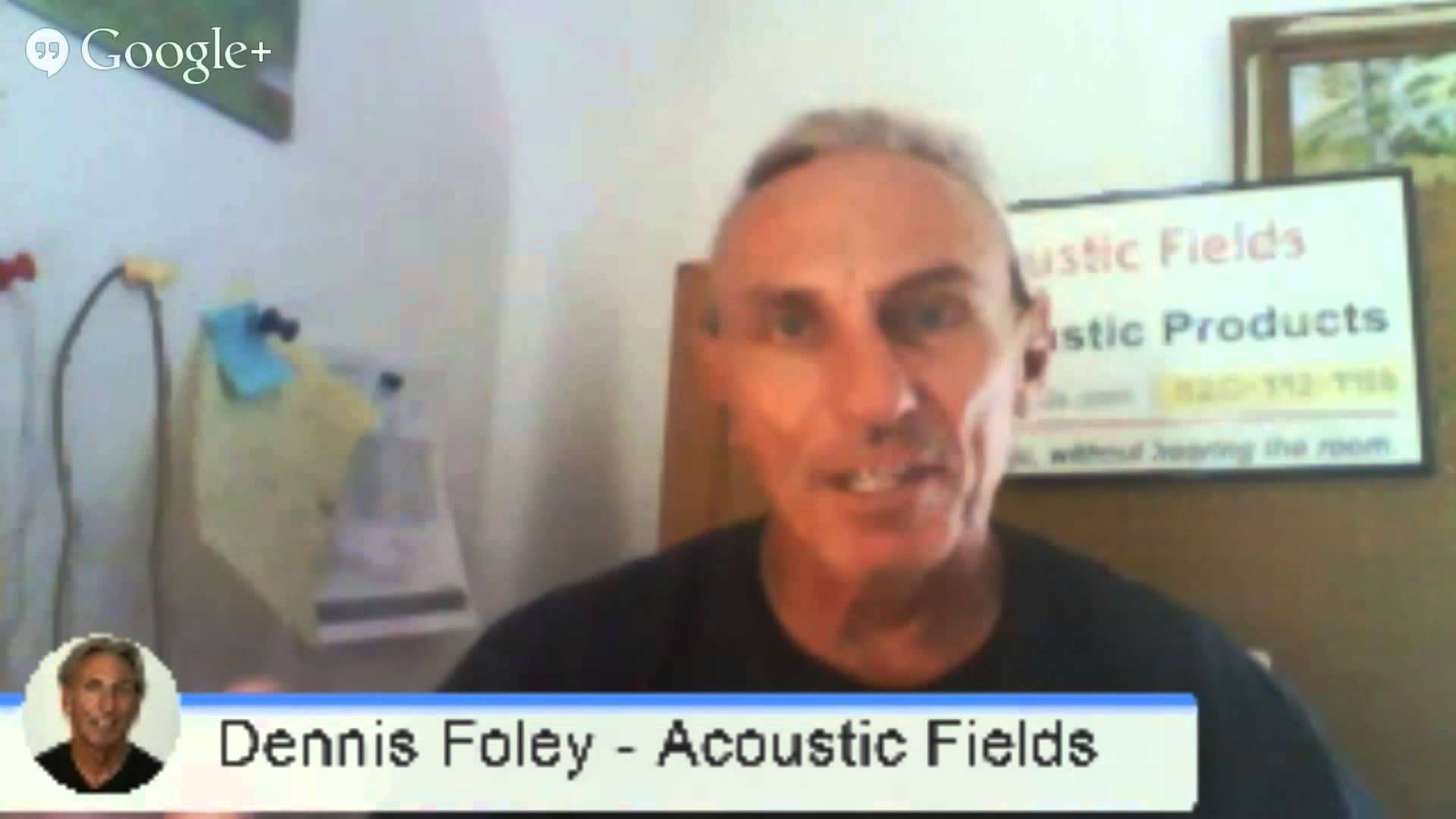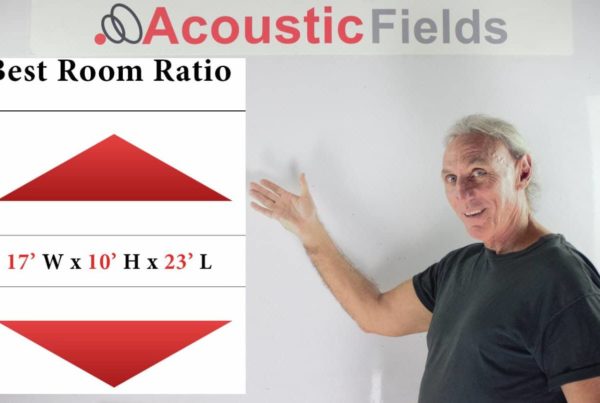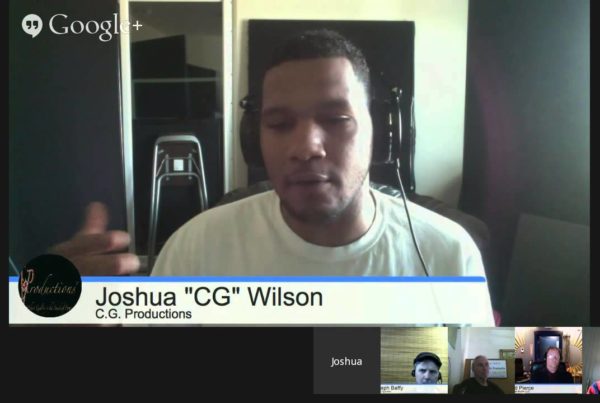I got posed the following question the other day and it is time to put this to bed once and for all. I was asked “Can you use acoustic foams to help manage bass and low frequencies? I’ve been looking in to this and some people say you can use low frequency acoustic foam.”
Well the categoric answer is No, No, No, No! I hope I have been very clear. I don’t know where this misconception and misinformation has come from. I just don’t understand it.
There is no such thing as low frequency acoustic foam
Foam is a middle and high frequency absorption tool and that’s all it ever will be, it’s all it ever can be. Low frequency energy takes a specially designed product to minimize, and I say minimize because really you can’t control it completely unless you have a wonderful room size to begin with.
So the clear and true answer to foam and low frequencies is they’re completely unrelated. Do not confuse them. You would need a foam eleven feet thick to absorb a hundred cycle wave, and that’s just the beginning of low frequency. This video on the definition of low frequency should help explain this further.
Don’t believe the marketing hype
It’s not a tool for low-frequency. I know a lot of companies out there say it is because they’re trying to sell you foam. But once you understand the physics behind it, you’ll realize that it’s not and I hope the above video went someway to helping you with that.
Here’s another thing that it’s not. It’s not a barrier. It won’t stop anything. You can’t use it to construct a wall, you can’t use it to block the energy from one room to the other, you can’t. It’s not designed to do that and I don’t know where that misconception has come from.
It’s also not a barrier
We just got an email from a client who is a DJ in a club and wants to block the sound energy that’s created in the DJ part of the club from the restaurant and asked if they could put some foam up to do that.
Well foam is not a barrier technology, it doesn’t block or restrict or inhibit anything. It only absorbs energy and it absorbs only middle and high frequency energy so just think of foam as a sound absorption tool for middle and high frequencies, that’s it, that’s all it will ever be.
Don’t try to bend it, twist it, poke it into places it doesn’t belong because it’s just not going to work. If you really want to manage low frequency energy, then for us, diaphragmatic absorption is the only way to go and this video explains a little more about that process.
In Summary
I hope this explanation helps end some of the confusion and myths that have frankly built up around the use of acoustic foam. Please leave any comments below so I can get back to you. Don’t be afraid to hit those Facebook like, Google+ and Twitter buttons on the left hand side so other people can see this post. And if you want to learn more about this subject please sign up for our free room acoustic treatment videos and ebook which provide step by step instructions. Get instant access by signing up now.
Thanks
Dennis








Hello, while doing a search on how to block low frequency sound from motorcycle exhaust hitting your ears inside the helmet, I ended up on your site. Your explanation is awesom.
Do you have any ideas on how to block the low freq sound which sometimes hits like a drum beat inside the helmet.
Thank you.
Chip, Best to wear a very thick helmet and ear plugs.
I have a low to mid frequency sound coming through a shared wall in an apartment bedroom. It is not loud but is is disruptive to sleep. Is there any way to block this sound without ripping the wall apart?
P, You would have to add layers to the existing wall. It would be permanent. Have you tried earplugs? They can be quite effective if you get ones that fit. Use the soft rubber cones that mold to your ear canal.
Hi Dennis, I have central ac fans/evaporators in the attic, right above my master bedroom. I hear them and sometimes it bugs me. Are those low frequency sounds and what do you think is the best way to block the sound from coming through ceiling/walls? Can I wrap the units individually or do i need to cover attic floor/walls/rafters?
Thank you
Yev
Y, With noise, you must measure the frequency and amplitude of said noise and design the proper barrier technology. What is the frequency and amplitude of the noise issue?
For years we have been looking for a way to make a dog house that reduces thunder noise. Our dogs tremble with every bit of thunder, and it thunders alot in florida. We are thinking it could be a small enclosure a couple feet in length and width. Any way to reduce low frequency thunder noise (0-1k) in a small enclosure? If not, other ideas?
N, It is possible. However, the walls floor and ceiling would end up being 12 – 14″ thick. The door would also have to be sealed shut when the animal is inside.
Trying to soundproof my car and reduce the low-frequency thumps of the road. It’s a combination of the thumpy car floor and stiff sport suspension. What do you suggest? I’ve already done a lot of soundproofing putting MLV over the entire inside of my car (trying to wall off the noise).
Thanks so much for sharing your expertise!
J, Reducing noise in a car is a challenge. All you can do is add more mass.
Hi Dennis,
i have a 5×8 vocal booth and was wondering how i could make it “sound good” for vocal recordings? i had acoustic foam all over the place in my previous booth but this didnt help with lower frequencies. It did help with the echo tremendously. Could a combo of rockwool panels and acoustic foam give me a decent sound?
D, No, building insulation destroys middle range frequencies through overabsorption.
Hi Dennis,
This has been the most helpful information I have come across. I work in a manufacturing shop with several tumblers running throughout the day that are putting out low frequencies at 40hz. This permeates through all of the office space even on the other side of the building. It looks like adding mass is the only way to minimize this, but the idea of building a cinder-block wall is not a very likely scenario.
Will putting up some kind of very dense rubber help solve the problem for us a little bit? I also came across an idea of using old tires and filling them with mineral wool. I suppose i can also use sand instead. Are either of these effective methods for our situation?
Thanks in advance!
A, You must build a barrier that is designed to deal with 40 Hz. energy. Guessing with low-frequency noise transmission is never a good idea. You can also reduce the amount of energy that is transmitted through your structure by using sound absorption technology with appropriate barrier technology.
HI,
My neighbour is targeting me with a low frequency device . It starts with a low humming noise and when it gets to me it gets really loud . Sound like a horn being blown in your face .
Sometimes I also get very sharp loud high pitch noise going straight into my ears when I am lying on my side with my ears resting on my pillows. My neighbour is living in a flat below me therefore there is a concrete floor which separates us . Can you help me find a way to block this ?
All noise must be measured so you can then desiogn the appropriate barrier based upon the noise frequency and amplitude. We have processdes for measuring the noise using your phone. Contact us at info@acousticfields.com